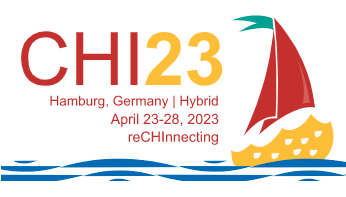Due to COVID-19, there has been an inevitable shift in the learning paradigm. When the world is at a pause, the only outlet to persist education has been through a transition from an in-person to an online-based learning experience. This challenge in the educational scenario caused by the pandemic has brought us to the brink of yet another transformation that Education had been waiting to witness.
I am currently researching to understand how students learn programming and how collaborative learning can be used in this specific context for a pedagogically rich learning experience. This led me to not only look at the prospects of interactions that happen while learning, both in offline and online environments, but also to understand the nuances of mediating these interactions among different entities on a larger scale. This gave me a good reason to attend the L@S 2020 Conference and learn more about the interesting works going on in the field of education transformation.
Learning at Scale, known as L@S (pronounced as L-AT-S) is an annual conference by the Associated for Computing Machinery (ACM). It focuses on investigating student learning, insights on learning habits & experiences, educational technologies, and emerging forms of co-creation & knowledge-production at a large-scale.
I took away some interesting insights from this conference. And through this blogpost, I will be sharing with you all a summary of two projects from the many that fascinated me.
KEYNOTE SPEECH: What My Little Pony Can Teach Us About Interest-Driven Learning
The keynote speech peeped into the world of seemingly trivial and pop-culture driven fan-fiction writers and communities and discovered how these under-represented social spaces have been shaped for sophisticated and informal learning. The keynote was delivered by Dr.Katie Davis from the University of Washington, based on her book ‘Writers in the Secret Garden: Fanfiction, Youth, and New Forms of Mentoring’ that she had co-authored with Cecilia Aargon.
The speech highlighted their findings from an in-depth study of fan-fiction writers and repositories online and how these takeaways can be extended to formal education.
The highlights of their findings were :
-
- In the online communities of fan-fiction writers, there exists a central collaborative drive among the members to provide mentorship to each other through distinct constructive feedback, to support and learn from each other.
- The authors define this novel system of providing interactive advice and instruction as Distributed Mentoring. Distributed mentoring is characterised by 7 attributes: aggregation, accretion, acceleration, abundance, availability, asynchronicity, and affect – which essentially shapes how mentorship works in a networked community to be most effective for learning.
- The 3 cornerstones that build functional ‘distributed mentorship’ are based on personal relevance, authentic learning context and supportive social interactions.
- The pre-conditions that are essential for distributed mentorship to take place are interest-driven creation, one (or more) affinity space(s), and networked technologies.
Extending the findings to a larger scale and formal system of education, the speaker provided the following design implications for distributed mentoring :
-
- Open, community-based system to instil learning through collaboration.
- Pseudonymous presentation of writings and feedback.
- Inter-school/ country connections for scaling the system.
- Interest-based groupings for relevance in mentorship.
- Teachers to act as coaches & moderators.
My Reflections: An essential part of my research focuses on how students behave in collaborative environments of studying, and how to optimise these environments for maximum learning. I was surprised to see my takeaways from this keynote. Even though it came from a different field of focus (not programming), it was still predominantly relevant for the research that I am doing. I was excited to learn about the affordances of distributed mentoring and eager to push it in my area of research. But, the idea of pseudonymous interaction especially intrigued me. It made me think of the implications that the introduction of anonymity of members in a group can have and influence the dynamics of interaction for learning.
PAPER : “The Synchronicity Paradox in Online Education” – David Joyner (Georgia Institute of Technology), Qiaosi Wang (Georgia Institute of Technology), Suyash Thakare (Georgia Institute of Technology), Shan Jing (Georgia Institute of Technology), Ashok Goel (Georgia Institute of Technology) and Blair MacIntyre (Georgia Institute of Technology)
This research investigates the issue of social isolation in an online graduate program from three unique angles. The work reports three independent studies examining students’ social presence in Georgia Tech’s online, asynchronous, semester based MSCS program ( with 11,000 students as of Fall 2020). The findings were rather interesting and collectively point towards what is known as ‘synchronicity paradox’.
-
- #Study 1 : A direct survey-based examination was conducted on social presence in online classes, with a goal to find out the student experience from a research perspective. The results indicated that students’ sense of connection was not high, nor was it absent. The students felt comfortable with, but not strongly connected to, classmates.
- #Study 2 : A needfinding study was conducted for designing an interface to support the student community, where the researchers wanted to address “why” students felt the way they did. It was reported that nearly half (42.5%) students felt isolated in the online program. Moreover, students felt more isolated as they finished more courses. The findings suggested that the isolation may be influenced by the factors of forming social relationships, especially colocation and synchronicity, which were not present in the online program. This revealed an interesting observation, that the fundamental aspect of the program, it’s asynchronicity, may be an influencing factor to increase student isolation.
- #Study 3 : A design-based study was conducted to test tools for synchronous interactions in the program. The results showed that students engaging synchronously through a chat tool during lecture felt more connected (65%) than asynchronous email (52%) or synchronous virtual reality (45%).
These studies collectively reflected that the desire for connectedness amongst students was in tune with the program’s geographic distribution. But it was also conflicting with it’s asynchronicity. It echoed that not only the quantity of interactions matters, but there is an influence of synchronicity in creating quality of interactions, and experiences of synchronous environments which were valued equally if not more. The Synchronicity Paradox was thus the very feature of the program that made it accessible to a larger audience, but opposed in fostering a sense of student community.
You can find the paper here.
My Reflections : This study particularly interested me for two reasons. Firstly, it is serendipitously relevant in the current situation of the unavoidable social isolation that has been introduced in the process of learning. Secondly, because it was particularly aligned with my field of work.
An interesting takeaway for me from this project was to look at synchronicity and asynchronicity as a dual aspect of delivering education online, rather than treating them as separate attributes. In this paper the authors also provide design implications for emerging synchronicity in online learning environments as their future work. But what will be interesting is to see how the different activities of teaching & learning can be managed within the context of these two features in a hybrid learning environment that can foster connections in online classes. It can further be extended to explore the degrees to which students seek individuality and collaboration in learning a subject, and whether the subject has an influence on it.
There are more projects and papers from the conference that left an impression on my mind. I will talk more about them in my next post. Till then, happy learning!
Author : LAHARI GOSWAMI




